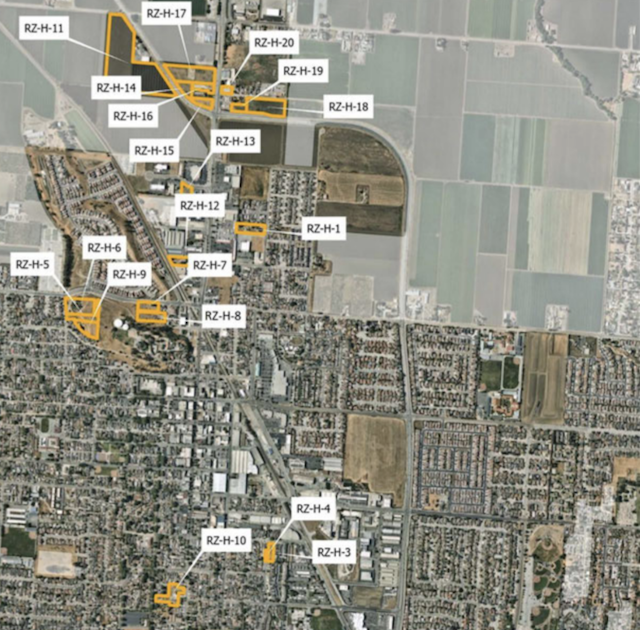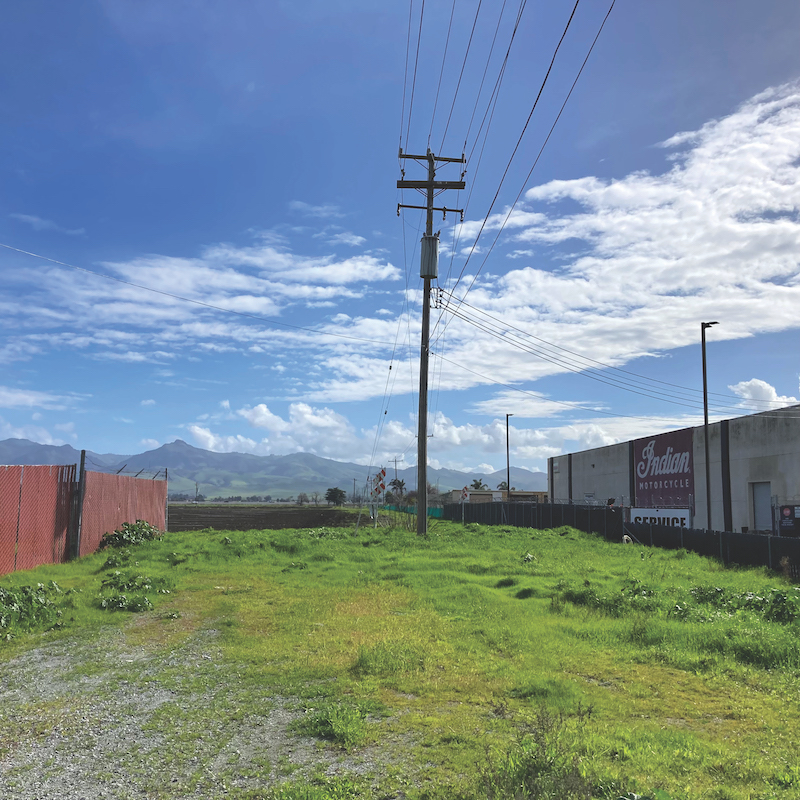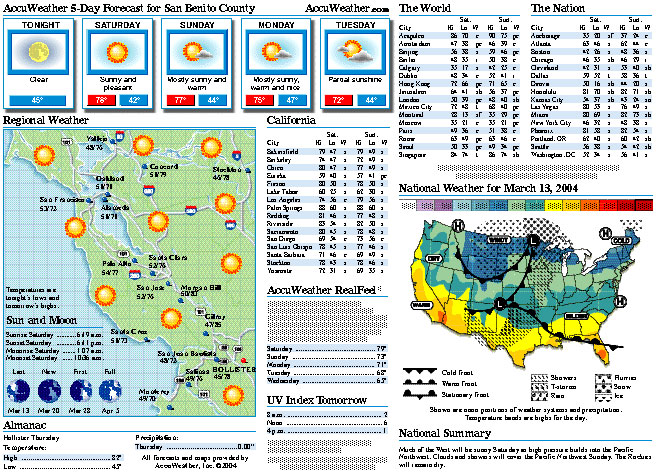
The City of Hollister’s draft housing element is open for public review and the city council is looking for more public input before it is submitted to the state’s Department of Housing and Community Development (HCD) in March.
The draft plan calls for the zoning and planning for 4,163 new housing units in the city by 2031, a 216% increase from the previous housing element’s recommendation of 1,316 units. Based on the state’s average of four people per household, this could mean new homes for over 16,000 people.
In Hollister, single-family homes make up for about 80% of the city’s total housing stock, according to the draft housing element. This is higher than the Monterey Bay regional average, where single-family units make up 71% of total housing stock. In California, the average is 65%.
Multi-family units make up only 17% of Hollister’s housing stock.
The city’s efforts to meet the local housing needs and plan to build for so many new residents will bring changes and new challenges to Hollister—so much so that at least one city council member wishes more members of the public would get involved.
During the Feb. 12 meeting, Hollister City council member Tim Burns spoke up with concerns about the lack of residents’ engagement with the public approval process.
Bryant De La Torre, planning analyst with Kimley-Horn, told Burns that 24 people had attended a previous community meeting and that only two people had submitted comments about the draft plan.
“Those numbers sound awful to me. And I don’t know if it’s unique to Hollister, I don’t know what other jurisdictions that you guys have done the same work for, but is that to be expected that the responses from the community are going to be terrible?” Burns asked.
“Because when I look at a community of 40,000 plus residents, and you’re talking about 50 people that are going to help weigh in on how we decide the future for the next eight years, that’s a great concern to me,” Burns said.
Hollister is currently behind schedule on submitting its draft to the HCD for certification. The initial date to submit was in December 2023, but a grace period extends until March 2024.
A housing element identifies housing needs in the city and plans for future growth to provide housing for all income levels. It is one of various elements of a city’s general plan, which serves as a blueprint for a community’s vision for the future.
The Hollister City Council and the city planning commission held a “study session” meeting on Feb. 12, alongside consulting firm Kimley-Horn, which is helping city staff with its draft proposal.
The number of 4,163 units was determined by the Regional Housing Needs Allocation (RHNA), the HCD’s process of determining housing needs for cities and municipalities. The RHNA forecasts housing allocations on an eight-year cycle—the current one is the 2023-2031 cycle.
The city must submit its draft housing element to HCD by Feb. 29. After that will follow a 90-day review period. The public will still be able to comment on the housing element until the city council adopts a final draft some time after the review period, according to city staff.
Housing Needs
Housing needs in the city are assessed by looking into the population’s demographics and “special needs groups.” These include large households, female-led households, farmworkers and households living at an extreme low income or on the poverty line.
According to a community survey taken last year, Hollister residents consider housing for seniors and large families as a top priority to address in the housing element.
The 4,163 projected units needed over the next eight years would vary in affordability rates based on income categories that are determined by the RHNA process. The draft housing element splits the total housing units into income categories. The five categories are based on the area median income (AMI) of a four-person household living in San Benito County, which is $140, 200 per year:
- Extremely Low Income: $0-$33,400
- Very Low Income: $33,401-$55,650
- Low Income: $55,651-$89,050
- Moderate Income: $89,051-$168,250
- Above Moderate Income: $168,251 and above
According to city data, 40% of Hollister residents fall under the Extremely Low to Low income categories.
The total of the projected units in the draft housing element will be distributed into the five income categories based on need:
- Extremely Low /Very Low Income: 846 units
- Low Income: 678 units
- Moderate Income: 826 units
- Above Moderate Income: 1,813 units
To be able to accommodate the over 4,000 housing units required by RHNA, the city will have to rezone potential build sites. Existing projects and projects the city forecasts to be built by 2031 under current zoning laws are only expected to accommodate up to 2,099 housing units—about half of what is required.
City planning staff, alongside Kimley-Horn, have identified potential sites to be rezoned for residential use. These include the 363-acre North Gateway vacant lot on San Felipe Road adjacent to Hollister Powersports. That site could accommodate 636 units, 159 of which would be designated Very Low to Low Income. Other rezone sites the draft plan proposes are along the downtown corridor and high density residential rezones.
The potential high density residential sites would accommodate up to 1,410 Above Moderate income units.

Credit: Michael Moore
By comparison, plans for the downtown corridor would rezone 10 acres that currently allot for 300 housing units to a higher density with the capacity for 572 units.
Eva Kelly, Acting Development Services Director/Planning Manager for the City of Hollister, said at the meeting that they are planning for a 20% “buffer,” which means that the number of proposed units to be developed according to the draft plan is 20% over the RHNA targets.
The rezones will be in compliance with the updated zoning ordinances that are being worked out as part of an amended general plan, according to city planning staff. The amended general plan will be ready for review by the end of the year. In accordance with these amendments, the gross density calculation that will be applied to rezone sites will amount to more units built per acre of land.
City’s Concerns
De La Torre said that public engagement varies across jurisdictions but that, in general, communities have limited engagement with government processes like the housing element. Council members suggested targeted fliers and other outreach to get the public involved.
Ensuring that the plans laid out by the draft housing element are followed in the coming years is also a concern for city officials.
Council member Rolan Resendiz said that specific actions need to be taken to ensure the plan moves forward in the event of staff and elected official turnover.
“To me it looks like…we’re really going to significantly change the look and feel of the city; we’re really going to move forward and meet the needs of housing for residents,” Resendiz said. “But if we’re not following through on these actions, then we’re not going to get any of this done.”
City manager David Mirrione assured Resendiz that the housing element will reflect the city’s general plan and work in parallel with it.
Another concern brought up by city officials was the need to build infrastructure like sidewalks and provide access to services for commercial areas being rezoned into residential or mixed use areas. Kelly and De la Torre assured that these concerns were being taken into consideration.
Developer Concerns
For any of the future housing to be built, real estate developers have to want to build in the area. At the Feb. 12 meeting, Dennis Martin, speaking on behalf of Building Industry Association Bay Area, recommended the city pause its efforts to draft a housing element until the general plan was amended. Martin said that building higher density housing in Hollister was “not feasible” for developers and that a new rezone strategy was needed.
“Right now this rezone strategy is completely unworkable,” Martin said.
Additionally, Martin alleged Hollister’s building fees were the highest in the region.
During public comment, former Hollister City Council candidate Julio Rodriguez said that he was heartened by the draft housing element and that rezones would offer much-needed higher density to lower-income families.
He said city residents should have the last word on their housing element and general plan.
“[T]his isn’t the developers’ general plan; this isn’t the real estate industrial complex’s general plan. This is Hollister’s general plan, we get to facilitate our future,” Rodriguez said.
If you wish to review the draft housing element, visit the City of Hollister’s website at https://hollister.ca.gov/housing-element/.
Editor’s note: A previous version of this story included a headline that incorrectly stated the city’s requirements regarding the housing element.








Planning for affordable housing is not for the weak but it has to be done and I very much support the lower income residents having more opportunities for rentals or ownership.